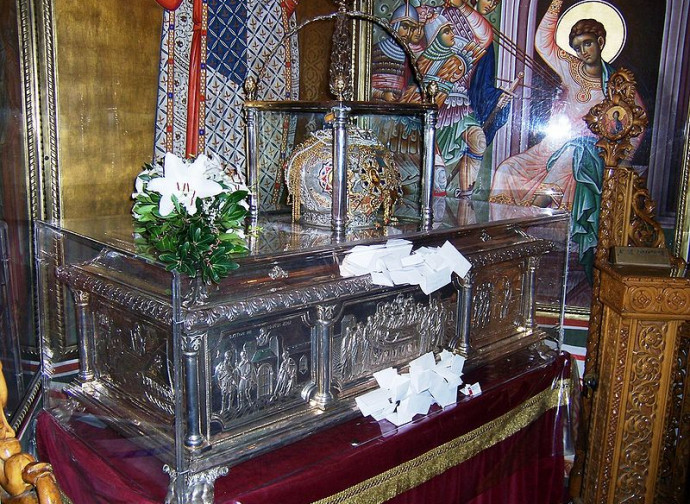Saint Demetrius of Thessalonica
He is highly venerated in the East, where the Orthodox Churches attribute to him the title of Megalomartyr (great martyr)

He is highly venerated in the East, where the Orthodox Churches attribute to him the title of Megalomartyr (great martyr) and his cult is almost equal to that of Saint George. Saint Demetrius of Thessalonica offered his testimony of faith in Christ with his blood, presumably during Diocletian’s Great Persecution at the beginning of the 4th century. The oldest written sources that have come down to us are a hagiography dating from the 9th century and an older collection of homilies on miracles attributed to his intercession, known in Latin as Miracula Sancti Demetrii. The Orthodox celebrate him mainly on 26 October (another date is 8 November), while the Catholic Church celebrates him on 9 April.
The latest edition of the Roman Martyrology (2004) does not mention Thessalonica as the traditional site of his martyrdom, but fixes it in the region of the ancient Roman city of Sirmio, following a hypothesis already formulated in contemporary times by the Bollandist Hippolyte Delehaye (1859-1941). Sirmio was the most important military base in the surrounding area until the first half of the 5th century, when Thessalonica itself took over. Today's Martyrology reads: “At Srijem in Pannonia, in present-day Croatia, Saint Demetrius, a martyr, who enjoys pious veneration everywhere in the East, especially in Thessalonica”.
According to hagiography, he died pierced in the side by spears. He may have been a deacon, but during the Middle Ages tales spread that described him as a Roman soldier or even as a proconsul. Because of this military association - he is often compared to St George, including for their iconography (the two are sometimes depicted together on horseback) - the Crusaders venerated him as one of their main patron saints. Most of his relics are kept in the Basilica of St Demetrius in Thessalonica.




